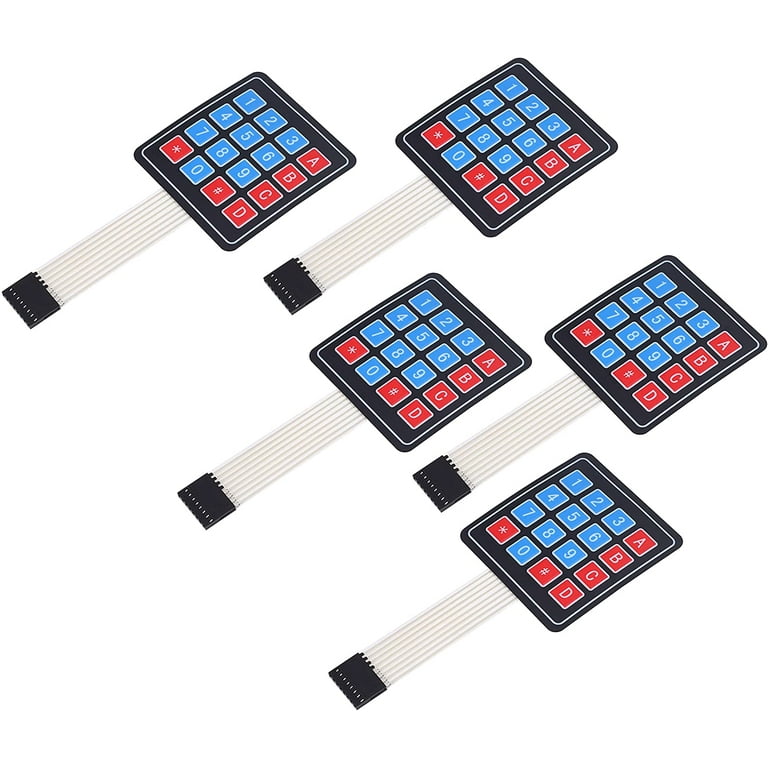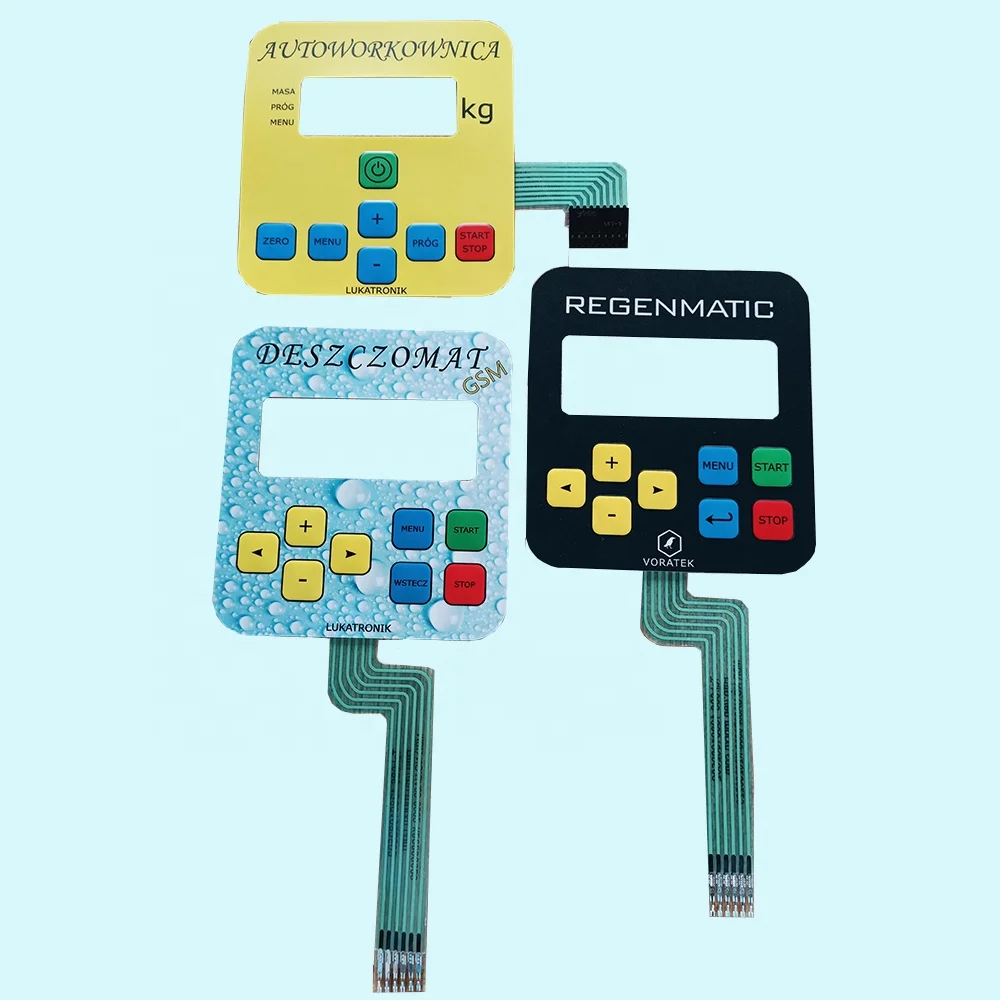Work with a Membrane Switch Manufacturer Dedicated to Quality
Work with a Membrane Switch Manufacturer Dedicated to Quality
Blog Article
Understanding the Relevance of Membrane Switch in Modern Electronics and Their Applications
Membrane switches over work as an essential element in modern-day electronics, providing a reliable user interface for individual communication. Their light-weight and customizable nature makes them suitable for a series of applications throughout varied markets. Comprehending their crucial parts and advantages can offer understandings into their expanding significance. As innovation proceeds to advancement, the evolution of Membrane switches over questions regarding their future applications and design innovations. What lies in advance in this vibrant field?

What Are Membrane Switches?
Membrane switches are vital elements in modern electronics, functioning as interface that promote interaction between gadgets and individuals. These buttons include several layers, consisting of a graphic overlay, a sticky layer, and a circuit layer, every one of which collaborate to develop a functional and long lasting user interface. The style permits a flat, inconspicuous remedy that can be tailored regarding dimension, shape, and visual look, making them ideal for numerous applications, from consumer electronics to clinical gadgets. The tactile feedback provided by Membrane switches over enhances individual experience, while their resistance to dirt and moisture makes them excellent for challenging atmospheres. Membrane buttons can include features such as backlighting and printed graphics, even more increasing their functionality. Their versatility and effectiveness make them a recommended choice in industries where integrity and convenience of usage are paramount, inevitably adding to the smooth operation of contemporary electronic gadgets.
Secret Parts of Membrane Switches Over
While various elements add to the capability of a membrane switch, 3 main layers play significant roles in its style and operation. The leading layer, normally made from a sturdy polymer, works as the user interface for individual communication, commonly featuring printed symbols and graphics. Under this is the spacer layer, which maintains the required range between the top layer and the circuit layer. This spacer layer guarantees that the button triggers only when pressed, avoiding accidental inputs. Ultimately, the circuit layer has conductive traces that finish the electrical circuit when the leading layer is dispirited. These traces can be made from numerous products, including copper or silver. With each other, these parts create a durable and dependable gadget that is compact and flexible, appropriate for a broad variety of digital applications, from household devices to medical gadgets. Recognizing these crucial components is important for valuing the total performance of Membrane switches.
Advantages of Utilizing Membrane Switches Over

Membrane Switch Production Refine
Recognizing the Membrane switch manufacturing process reveals the complex steps included in producing these essential components. The process generally starts with the layout stage, where specifications and layouts are developed utilizing specialized software. Following this, the graphic overlay is published on an adaptable substratum, frequently utilizing high-resolution printing strategies to guarantee clearness and precision.Next, the sticky layers are used, which serve to bond the different parts together. The circuit layers, made from conductive inks or materials, are after that printed onto a different substrate. These layers are carefully lined up and laminated to produce a functional switch.After setting up, the buttons go through testing to verify performance and longevity. Quality control procedures are implemented throughout the procedure to recognize and rectify any kind of issues. The finished Membrane buttons are packaged and prepared for distribution, prepared to fulfill the needs of contemporary electronic applications.
Applications of Membrane Changes in Numerous Industries
Membrane buttons are significantly made use of throughout numerous sectors, particularly in clinical tools and customer electronic devices. In the medical field, they supply reputable control user interfaces for devices that call for precise operation. In consumer electronics, these switches enhance user communication by offering streamlined and responsive user interfaces. Receptive Medical Tools Control
Various contemporary clinical gadgets make use of Membrane buttons for streamlined operation and improved individual communication. These buttons provide a reliable, durable interface for a variety of applications, consisting of diagnostic equipment, client monitoring systems, and surgical instruments. Their customizable layouts allow for specific designs that can fit the one-of-a-kind requirements of medical care professionals, ensuring instinctive navigating and effective access to important functions. Additionally, Membrane switches are resistant to contaminants, making them appropriate for clean and sterile atmospheres. The tactile comments they provide can improve individual self-confidence, lowering the danger of errors during crucial medical procedures. In general, the integration of Membrane switches in clinical equipment considerably contributes to improved operational performance and patient safety in healthcare setups.
Customer Electronics Interfaces
In the domain name of customer electronics, Membrane switches play an important role in boosting interface throughout a vast array of devices. These switches are essential to items such as push-button controls, microwaves, and pc gaming consoles, providing a user-friendly and reliable user interface. Their design enables a smooth assimilation of graphics and capability, enabling manufacturers to develop sleek, modern-day aesthetics without compromising use. Membrane internet buttons are likewise recognized for their longevity, usually enduring extensive use and direct exposure to various environmental conditions. Furthermore, they can integrate attributes like backlighting and tactile feedback, more enhancing the customer experience. As customer demands for advanced yet intuitive interfaces grow, Membrane switches over continue to be an important element beforehand electronic tool performance.
Layout Factors To Consider for Membrane Switches
Designing reliable Membrane switches over calls for mindful interest to numerous variables that affect both performance and customer experience. One crucial factor to consider is the option of materials, as they can influence resilience, tactile comments, and aesthetic allure. Choosing an appropriate adhesive is important for guaranteeing lasting attachment and resistance to environmental factors.In enhancement, the layout and design of the switch should suit user interaction, with button sizes and spacing optimized for ease of usage. The incorporation of graphics and labeling need to prioritize clearness and exposure under numerous lighting conditions.Consideration of electric features, such as actuation force and button sensitivity, will certainly boost the responsiveness of the Membrane button. Moreover, the style ought to fit manufacturing processes to ensure cost-effectiveness and timely manufacturing. On the whole, a well-balanced layout enhances both the capability and the user experience of Membrane switches in modern-day electronics.

Future Fads in Membrane Switch Innovation
As technology proceeds to develop, Membrane buttons are positioned to integrate brand-new advancements that will boost their capability and application in various fields. One significant pattern is the unification of resilient and flexible products, which will certainly raise the life-span and dependability of these buttons. Boosted surface area structures and customizable graphics are likewise expected, enabling even more intuitive individual interfaces.Moreover, the integration of wise innovation, such as touch-sensitive surfaces and haptic comments, is expected to improve individual interaction, making Membrane switches more engaging and receptive. Additionally, advancements in published electronic devices will certainly allow more complicated wiring within thinner accounts, even more expanding layout possibilities.Sustainability will also play a vital duty in future advancements, as suppliers check out environment-friendly materials and manufacturing procedures. In general, these fads will guarantee that Membrane changes continue to be appropriate and crucial in a increasingly digital and interconnected globe.
Regularly Asked Questions
Exactly How Do Membrane Changes Compare to Typical Mechanical Switches?
Membrane changes deal advantages over conventional mechanical buttons, consisting of reduced dimension, lighter weight, and boosted longevity. They generally provide a secured surface, improving resistance to dirt and moisture, making them suitable for varied applications.
What Products Are Frequently Made Use Of in Membrane Switch Building?

Can Membrane Switches Withstand Extreme Environmental Conditions?
Membrane switches can stand up to severe environmental problems, relying on their layout and materials. High-quality building and constructions commonly include toughness against temperature level fluctuations, humidity, and exposure to chemicals, making them appropriate for various requiring applications across industries.
Exactly How Long Do Membrane Changes Usually Last Prior To Failing?
Membrane changes typically display a lifespan website here varying from 1 to 10 million actuations, depending upon elements such as use regularity, environmental problems, and manufacturing top quality. Regular upkeep can extend their sturdiness and functional integrity substantially.
Are Membrane Switches Personalized for Particular Applications?
Membrane buttons are certainly personalized for specific applications. They can be tailored in layout, dimension, and performance, enabling suppliers to meet special customer demands and improve product aesthetics while keeping operational efficiency and longevity. Membrane buttons are important elements in modern-day electronics, serving as customer interfaces that promote communication between users and devices. The responsive feedback offered by Membrane switches enhances individual experience, while their resistance to dirt and wetness makes them excellent for challenging settings. The unification of graphics and labeling ought to focus on quality and presence under different lighting conditions.Consideration of electrical qualities, such as actuation pressure and button sensitivity, will enhance the responsiveness of the Membrane button. Boosted surface area textures and personalized graphics are likewise expected, permitting for even more user-friendly user interfaces.Moreover, the assimilation of wise technology, such as touch-sensitive surfaces and haptic feedback, is expected to boost user communication, making Membrane changes much more interesting and receptive. Membrane switches over offer advantages over conventional mechanical buttons, consisting of minimized dimension, lighter weight, and improved longevity.
Report this page